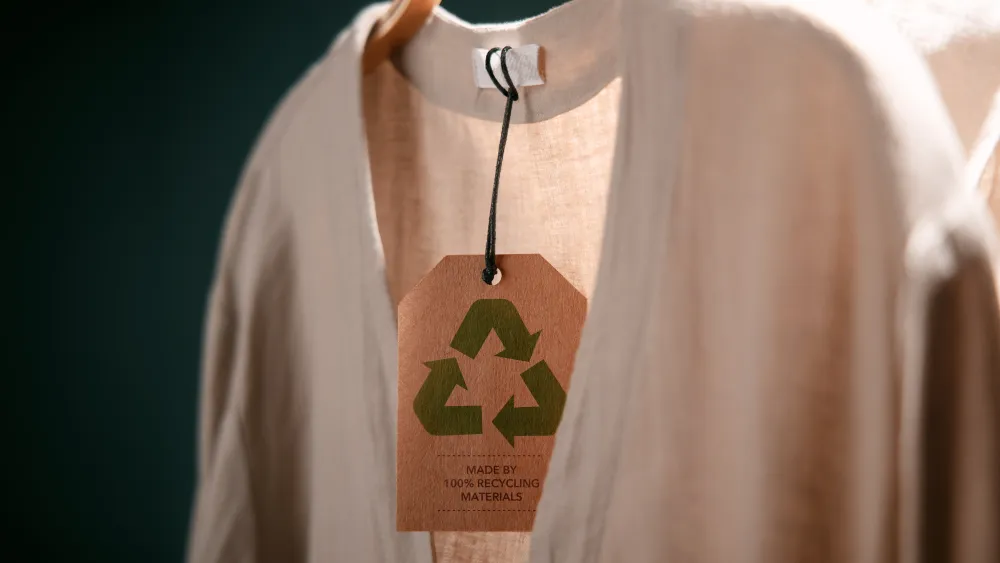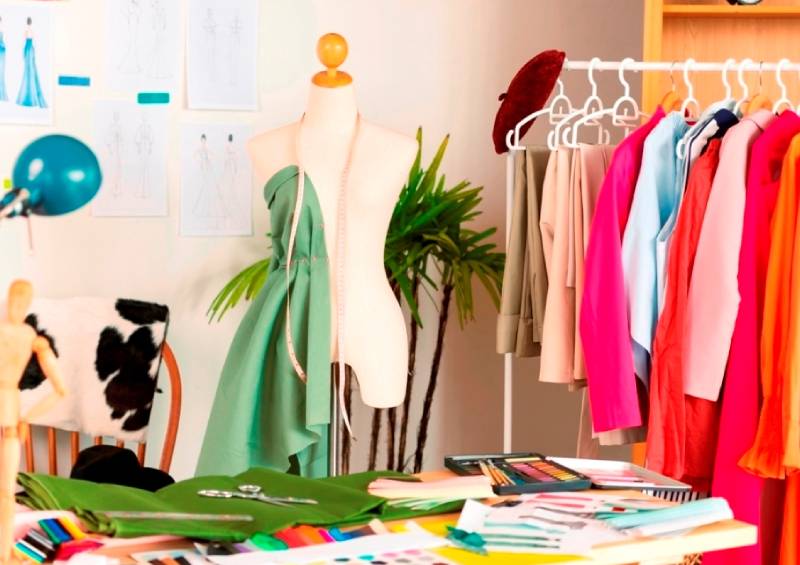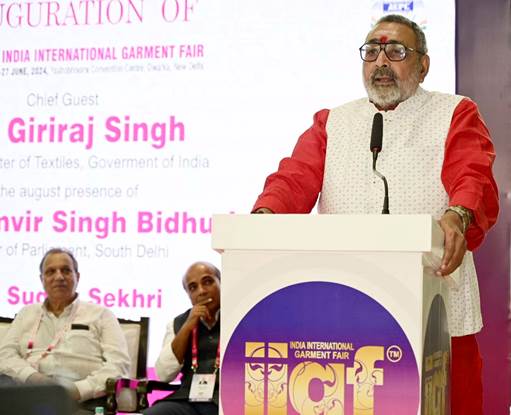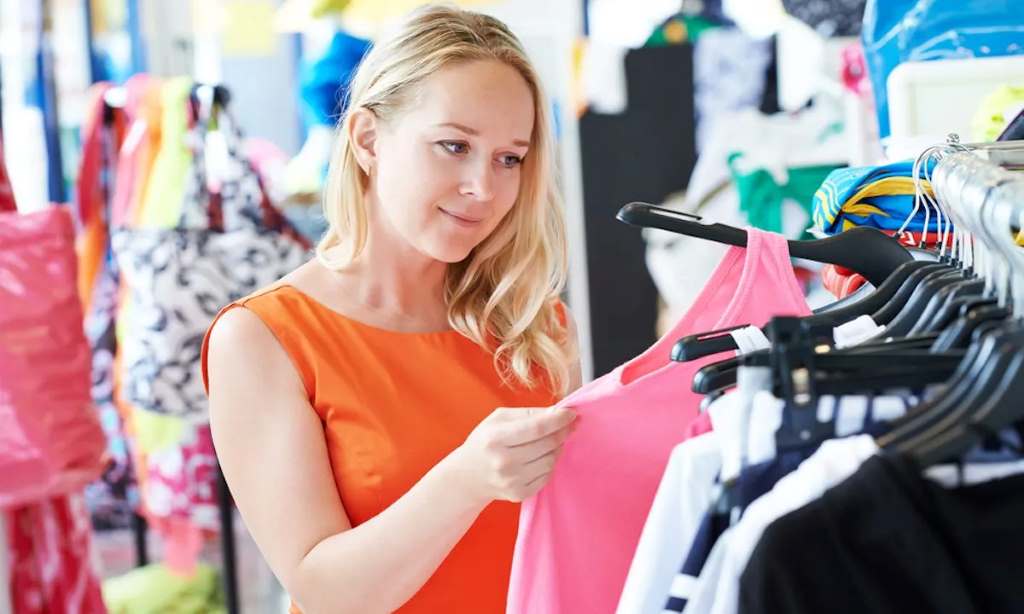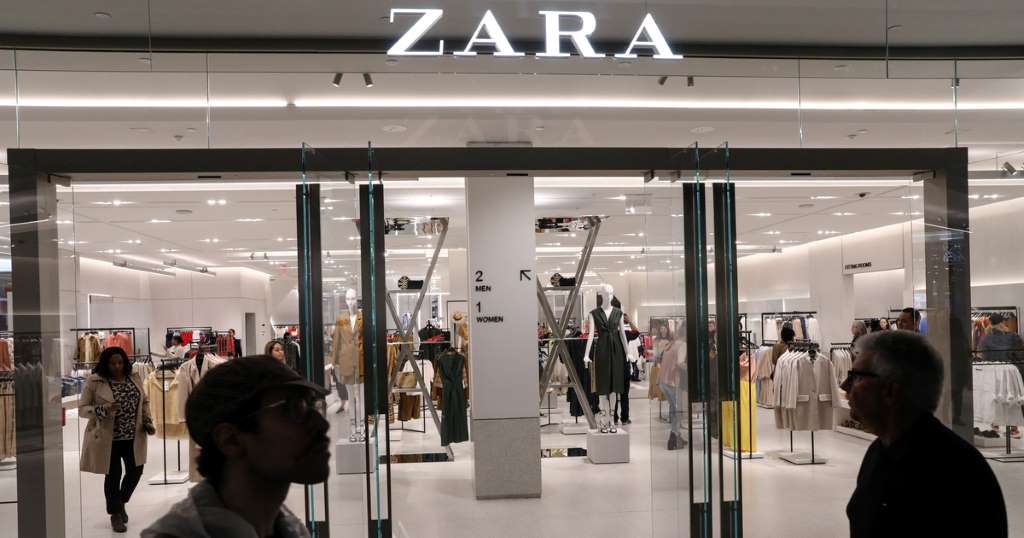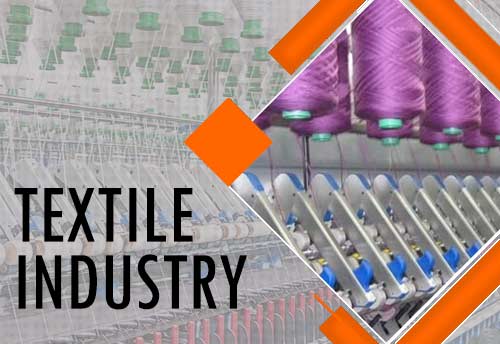FW
The May 2024 ITMF Global Textile Industry Survey (GTIS) reveals a stagnant textile business climate, with only marginal improvements. While more companies now rate their business as "satisfactory," the industry continues to face a dearth of orders and high costs, squeezing profit margins. Despite positive business expectations for the past year, these reflect optimism rather than actual progress.
Order intake balance has slightly improved, with expectations for the next six months trending upwards. The order backlog increased slightly from 1.9 months in March to 2.1 months in May, though this is not yet a positive trend. Capacity utilization in May rose marginally to 71 per cent, up from the end of 2021’s peak of 80 per cent. Better utilization rates are anticipated in the coming six months.
Persistent weak demand, high raw material and energy prices, geopolitical concerns, and labor shortages remain critical issues. Notably, 58 per cent of respondents did not experience order cancellations in May, a slight decrease from March. Africa and Europe reported fewer cancellations, whereas the Americas saw higher rates.
Inventory levels remain stable, with North America and spinners showing the highest levels. Brands and retailers continue to hold high inventories, though these are gradually decreasing. The industry’s prolonged negative cycle forces many companies to operate at a loss or with reduced capacity, with no significant turnaround expected in 2024.
Valued at $103.20 billion in 2022, the fast fashion market is projected to reach $291.1 billion by 2032, As per a report by Allied Market Research titled ‘Fast Fashion Market,’ the market will grow at a CAGR of 10.7 per cent from 2023 to 2032.
The fast fashion market is segmented by gender into male and female, by end user into adult, teen, and kid, and by distribution channel into independent retailers, online stores, and brand stores. Regionally, market analysis covers North America, Europe, Asia-Pacific, and LAMEA.
A few of theprominent players in the fast fashion market include Uniqlo Co, Forever21 Inc, The Gap, Inc, Primark, AsosPlc, New Look Retailer, H&M Fashion Nova, LLC, Boohoo Group Plc, and Industria de DisenoTextil, SA.
As per the report, the fast fashion market thrives on the desire of consumers to remain stylish and culturally relevant. Social media amplifies this demand, with influencers and celebrities showcasing fast fashion items, creating aspirational trends for consumers globally. This digital exposure drives the adoption of fast fashion in developing countries, where traditional retail might lag in trend responsiveness.
Developing countries often have a significant youth population that is tech-savvy and keen on adopting the latest trends. Fast fashion appeals to their sense of self-expression and individuality. Additionally, urbanisation and globalisation are reshaping consumer lifestyles, making fast-paced, adaptable fashion more desirable.
Despite its popularity, the fast fashion industry faces criticism for its environmental and ethical impacts. As consumer awareness grows, there is a shift towards more sustainable fashion options. This trend suggests that fast fashion brands might need to innovate and adapt to evolving consumer priorities while maintaining their market position.
SK Sundararaman, Chairman of the Southern India Mills Association (SIMA), emphasized the vision of creating a premium perception for the Indian textile industry at the inauguration of Texfair 2024. Texfair, one of India's largest international exhibitions for textile machinery and accessories, is organized by SIMA.
The 14th edition was inaugurated at the Codissia Trade Fair Complex by 'Ganapathi' Rajkumar, Member of Parliament for Coimbatore, alongside KV Srinivasan, President of ITMF, RakeshMehra, Chairman of CITI, and other dignitaries. The event will run until June 24, featuring 240 exhibitors, including over 75 international participants, showcasing advanced textile innovations.
Tamil Nadu, responsible for 45 per cent of India's spinning capacity and 33 per cent of its textile trade, aims for sustainable growth by continually upgrading technology, adopting cost-effective methods, and focusing on value addition and branding. Sundararaman highlighted the importance of accessing the latest innovations for growth.
MP Rajkumar assured support for addressing the challenges faced by MSMEs and the textile industry in Coimbatore, promising to advocate for them in parliament. He also mentioned the state's readiness to transfer land for Coimbatore airport's expansion to the Airports Authority of India (AAI), emphasizing the project's importance for regional development.
KV Srinivasan, President of ITMF, noted that China was the largest investor in new textile machinery in 2023 but has seen a decline in textile exports post-pandemic due to rising labor costs. He pointed out the opportunities for India, Bangladesh, and Vietnam to increase their apparel exports, particularly with the 'China+1 Strategy' adopted by global brands and retailers due to geopolitical shifts.
RakeshMehra, Chairman of CITI, urged the industry to prioritize sustainability, ESG, and modernization, highlighting the potential for increased exports in the current global scenario.
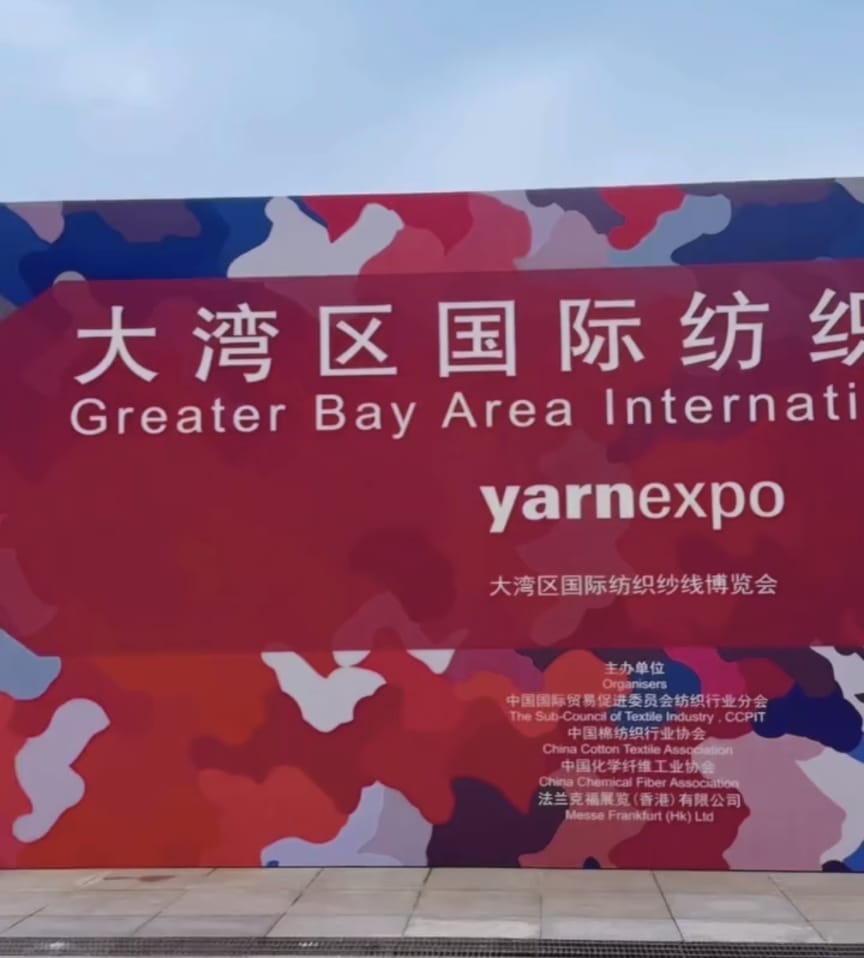
Yarn Expo Shenzhen 2024 drew its curtains on a successful three-day run, marking the close of South China’s first summer sourcing platform this year. Held concurrently with Intertextile Shenzhen Apparel Fabrics and PH Value, the fair welcomed nearly 20,000 visits from 45 countries and regions.
A thriving marketplace for yarn and fibre
Spanning over 1,600 sqm of exhibition space, the fair showcased over 70 exhibitors across seven prominent zones. Innovation and sustainability were key themes, with a dedicated New Green Fibre Materials zone and insightful seminars on topics like "The Green Innovation of Ternura" and "Interpretation of China Fibres Fashion Trends 2024/2025 – Outdoor Sports.
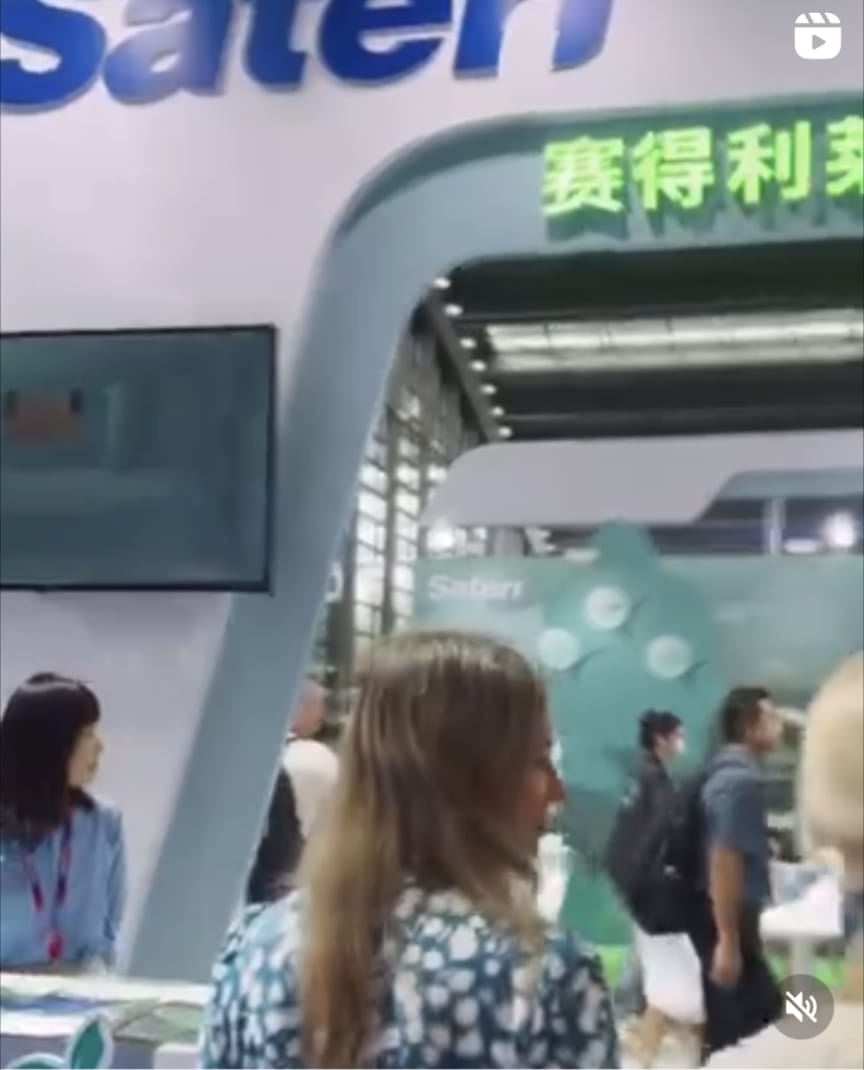
Messe Frankfurt (HK) Ltd. General Manager Wilmet Shea expressed her delight at the fair’s success, highlighting Messe Frankfurt’s commitment to adapting to the industry’s needs. The strategic move to June provided exhibitors with a fresh opportunity between seasons, while the relocation to Shenzhen’s CBD offered a prime location for fostering connections.
Exhibitors hail positive outcomes
Exhibitors reported a positive experience, with many citing strong buyer interest. Mohsin Ghoniya of Global Tex, India, noted the fair’s effectiveness in reaching the vibrant South China knitting market. Elaine Gu of Shanghai Mingmao Industrial, China, highlighted the growing demand for functional fibers in the lingerie market. Wu Liwei of Jingyi Group, China, observed increased traffic and buyer interest in their signature sustainable yarn products.
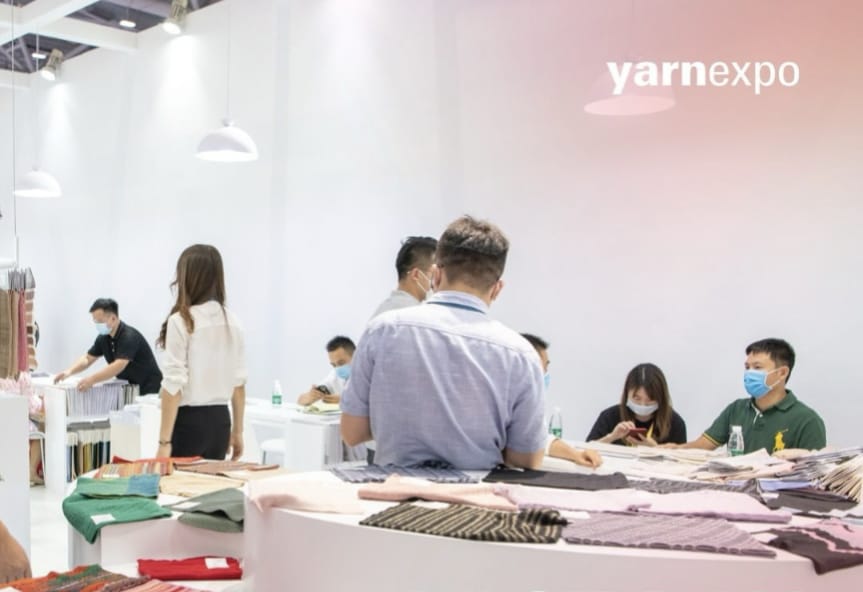
Buyers seek innovation and green partners
Buyers also expressed satisfaction with the fair’s offerings. Li Xuan of Shanghai Tong-Jie-Liang Biomaterial, China, was impressed by the focus on sustainability and sought partners with similar green initiatives. Xie Yongxian of Foshan Anxin Fiber Technology Co Ltd, China, emphasized the growing demand for high-performance, eco-friendly, and innovative fibers.
A comprehensive platform for the textile industry
Yarn Expo Shenzhen 2024, held concurrently with Intertextile Shenzhen Apparel Fabrics and PH Value, provided a comprehensive trading platform for the entire textile value chain. The fair’s success underscores its role as a key sourcing event for the South China textile industry.
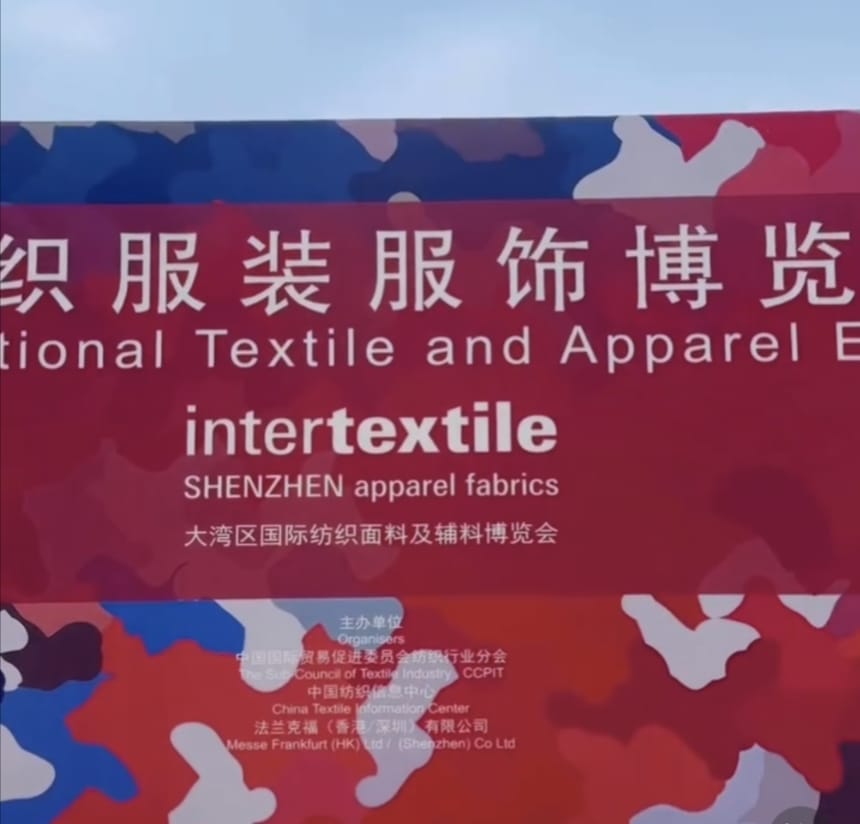
The recently concluded Intertextile Shenzhen Apparel Fabrics provided a vibrant platform for the exchange of trends, innovation, and sustainability practices amongst key players in the Asian textile industry. From June 5-7, 2024, the Shenzhen Convention and Exhibition Center (Futian) buzzed with activity as nearly 1,000 exhibitors from 11 countries and regions showcased a vast array of garment-related products.
The event attracted close to 20,000 visitors from 45 countries and regions, as per the final report, including dedicated buyer delegations from Malaysia and the European American Chamber of Commerce & Industry. The strong turnout underscored the fair's reputation as a premier sourcing destination for brands, manufacturers, and regional designers.
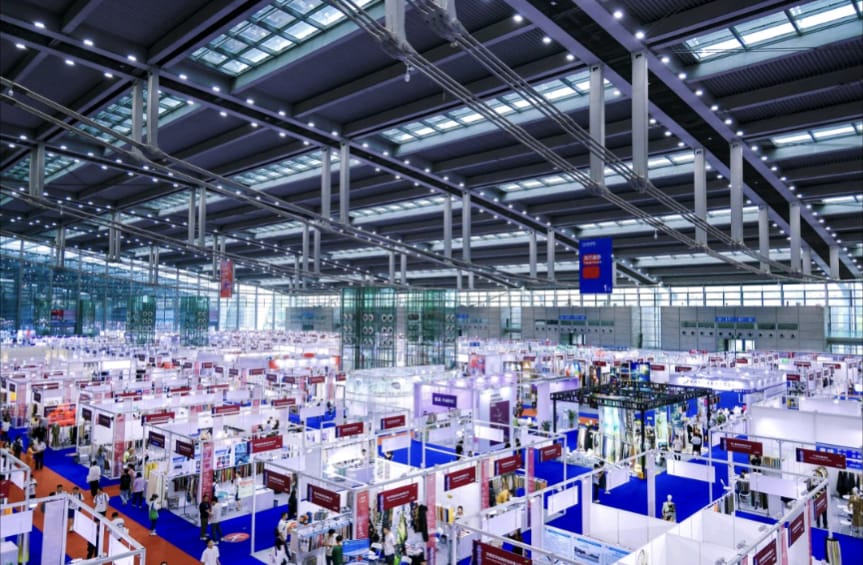
A hub for business and knowledge sharing
Intertextile Shenzhen offered a comprehensive experience for attendees. The Trend Forum provided valuable insights into upcoming fashion trends for Spring/Summer 2025-26 and Autumn/Winter 2025-26, while fringe events and dedicated display areas like the Sustainability Zone fostered knowledge sharing and exploration of eco-friendly practices.
“The fair has been very effective for international and domestic suppliers to showcase their innovations,” remarked Wilmet Shea, General Manager of Messe Frankfurt (HK) Ltd. “We are pleased to have delivered a business-friendly platform for players across the value chain and provided a stage for experts to share insights.”
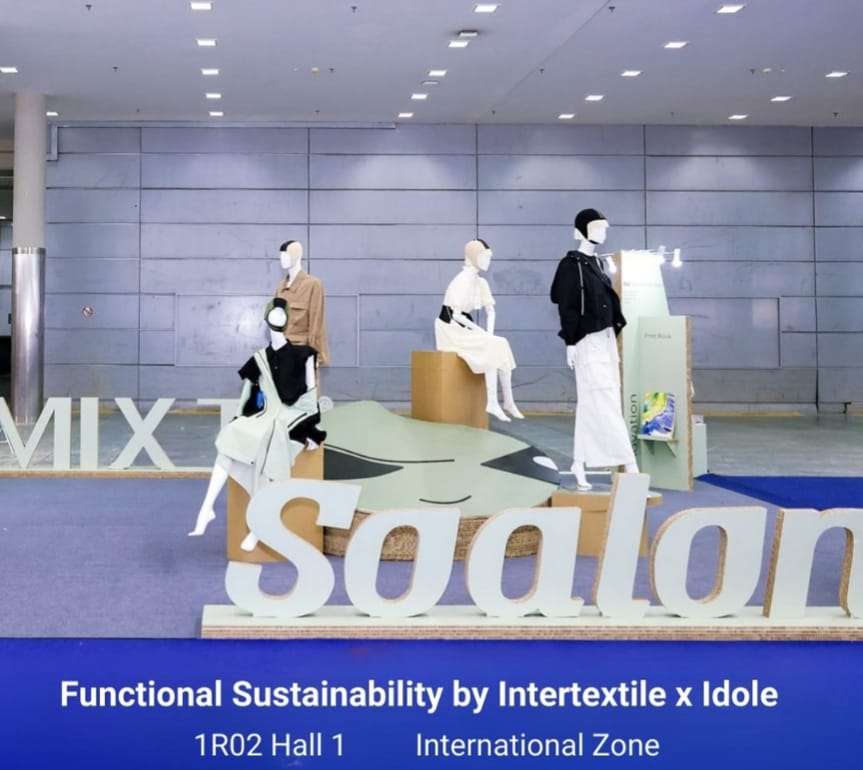
Focus on sustainability and technology
Sustainability emerged as a key theme, with dedicated display areas like Eco Trends by Intertextile x Sateri and Functional Sustainability by Intertextile x Idole showcasing innovative approaches. Speakers like Kang Zhang, Technical Manager of Nano and Advanced Materials Institute Limited, emphasized the growing demand for functional and sustainable materials. Raymond Chiu, Senior Research Manager at The Hong Kong Research Institute of Textiles and Apparel, discussed the potential of AI technology in textile recycling.
Knowledge sharing and global reach
Intertextile Shenzhen's seminar venues, Talking Point and Textile Dialogue, offered valuable insights on topics like AI's impact on textiles and upcoming fashion trends. The show floor buzzed with activity as international brands like Club Monaco, Diesel, lululemon, Ralph Lauren, Quiksilver, and ZARA interacted with attendees.
Three international buyer delegations, including representatives from the European American Chamber of Commerce & Industry, Malaysia Knitting Manufacturers Association, and Malaysian Garment Marketers Association, participated in business matching meetings with exhibitors. Over 250 such meetings took place, connecting exhibitors with individual brands and delegates.
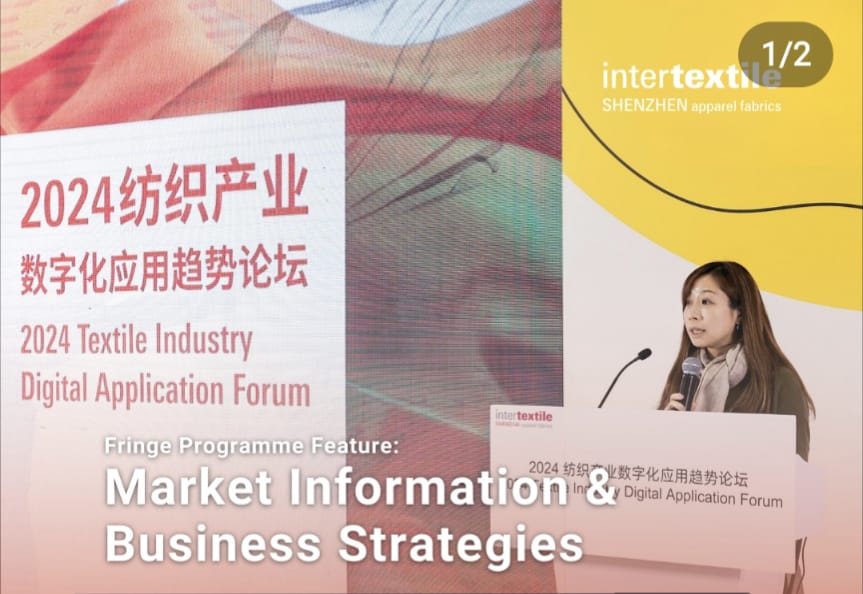
Insights from exhibitors and visitors
Exhibitors expressed satisfaction with the quality of visitors and the potential for future collaborations. Wilson Chiu, Managing Director of Yee Fung Hong Ltd (PRO ECUADOR co-exhibitor), highlighted the positive response to their sustainable and unique palm tree seed buttons. Similarly, Jay Hwang, General Manager of SK Tex Co Ltd (Korea Pavilion), appreciated the increased traffic and focus within the dedicated pavilion format.
Visitors also found the experience enriching. Kuan Chee Tan, President of the Malaysia Knitting Manufacturers Association, commended the visa-free entry policy for facilitating efficient sourcing. Dileep Kumar, Director of ExPlus Logistics (member of the European-American Chamber of Commerce & Industry), lauded the diverse offerings and focus on eco-friendly trends.
A successful collaboration
Intertextile Shenzhen Apparel Fabrics, held concurrently with Yarn Expo Shenzhen and PH Value, is a testament to the successful collaboration between Messe Frankfurt (HK) Ltd, Messe Frankfurt (Shenzhen) Co Ltd, the Sub-Council of Textile Industry, CCPIT, and the China Textile Information Center. The event served as a valuable platform for the textile industry to connect, innovate, and navigate the path towards a more sustainable future.
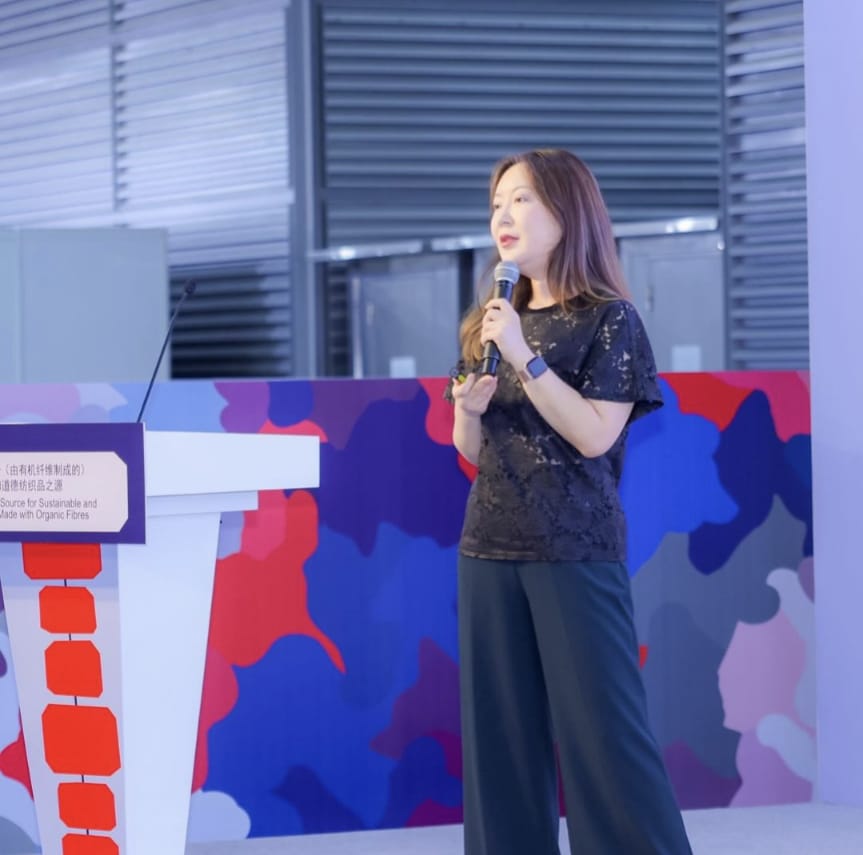
Felicia Shi, GOTS Representative for the Asia Pacific region, delivered a presentation highlighting the benefits of GOTS certification and emphasizing the importance of the GOTS standard for sustainable and ethical textile production.
"We were especially encouraged to hear at the trade show that leading downstream producers are exerting a pull effect on their partner in the supply chain to adopt GOTS," said Felicia.
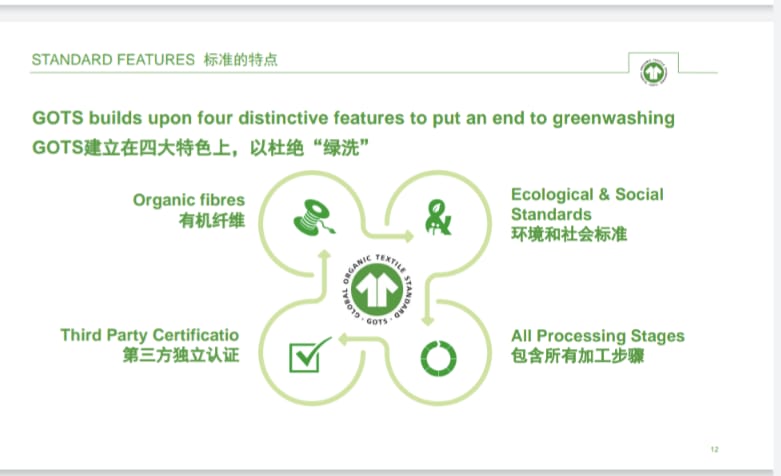
GOTS is committed to making organic textiles becoming a significant part of everyday life, enhancing people's lives and the environment. GOTS standards cover the entire supply chain, from field to fashion, ensuring the use of organic fibers and sustainable production practices. GOTS certification goes beyond just organic fibers; it signifies adherence to strict environmental and social criteria throughout the entire production process.
GOTS strives to be the leading global standard for sustainable and ethical textile production. It is rapidly becoming the leading global standard for sustainable and ethical textile production.

The premier textile event of Southern China, Intertextile Shenzhen Apparel Fabrics, concluded its 2024 edition on June 7th, buzzing with activity for three days. Held at the Shenzhen World Expo and Convention Centre in Futian, the event provided a platform for international exchange, fostering new connections and business opportunities within the global textile industry. With its focus on innovation, the event hosted a series of fringe events including a session dedicated to AI and its impact on fashion, apparel and textile industry, conducted by HKRITA.
Symmpix, a leading digital solutions provider for the fashion industry, unveiled its innovative AI-powered design platform, AIMDE, at Intertextile Shenzhen. This technology merges artificial intelligence (AI) with 3D visualization to revolutionize the textile industry by creating "phygital" products.
Bridging the gap between imagination and reality
Symmpix's approach aims to streamline the design and production process, minimizing environmental impact and financial burdens. Their end-to-end solutions empower users to bring their ideas to life swiftly, from conception to sales and marketing.
Addressing industry challenges
The fashion industry faces several challenges, including slow market response times due to lengthy lead times, high development costs associated with sampling and logistics, communication gaps leading to delays, and limited ability to visualize designs effectively. Symmpix tackles these issues with a suite of AI-powered and 3D solutions.
Symmpix's solutions
• AI-Powered fabric search: This feature utilizes text and image search to locate the perfect fabric for your needs. You can even export fabric details and download digital fabric files.
• New pattern generation: Effortlessly design new prints, stripes, and checks. The platform creates CAD-compatible data and integrates with popular CAD software.
• Visualizing products in 3D: Interactive 3D configurators allow you to view your designs on various silhouettes and make edits in real-time.
• Virtual fitting support: 3D fitting simulations ensure a perfect fit before production begins.
• Virtual presentation: Showcase your designs in a virtual environment using digital photoshoots, catwalks, and showrooms.
AIMDE: The AI-Powered Design Powerhouse
The AI platform, AIMDE (AI Merchandising and Design Engine), empowers designers, brands, and manufacturers throughout the product development process. Users can source fabrics, design patterns, and visualize products in 3D, all within a single platform. AIMDE boasts several advantages over competing AI tools, like no text prompts required, flexible color options, pattern type versatility, and advanced 3D product simulation. By adopting these solutions, companies can experience significant benefits like faster time to market, cost reduction and environmental sustainability
AI-powered solutions bridge the gap between imagination and reality, offering a faster, more cost-effective, and environmentally friendly approach to textile design and development.
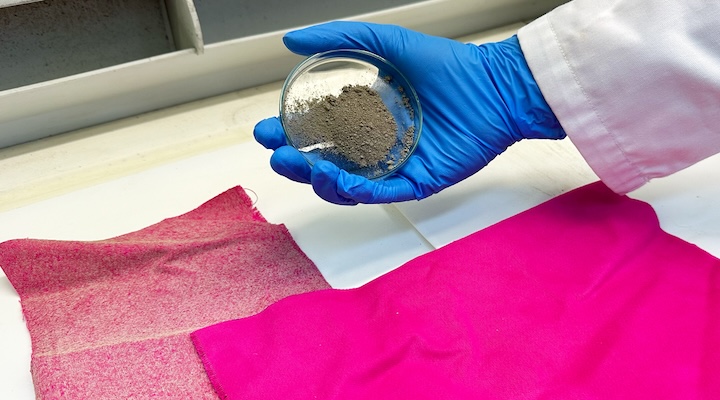
In a groundbreaking study conducted by RMIT University, nanodiamond-coated fabrics have emerged as a potential game changer in temperature regulation, offering hope for cooler and more comfortable clothing amid rising global temperatures.
Cooling efficiency and UV protection
Published in Polymers for Advanced Technologies, the research demonstrates the remarkable cooling efficiency of fabrics treated with nanodiamonds. Compared to untreated cotton, these fabrics cooled down by two to three degrees Celsius faster, offering a significant improvement in comfort, especially during hot weather or intense physical activity.
Lead researcher Shadi Houshyar, a Senior Lecturer at RMIT, emphasizes the practical implications of this discovery: "While two or three degrees may not seem like much of a change, it does make a difference in comfort and health impacts...could be the difference between keeping your air conditioner off or turning it on."
Aside from their cooling properties, nanodiamond-coated fabrics also provide enhanced UV protection, making them ideal for outdoor summer wear. This added functionality not only benefits individuals but also contributes to energy savings, with potential reductions of 20-30 per cent in air conditioning usage.
The study utilized cotton as the base fabric, but researchers suggest that other natural and synthetic fibers could be explored. The fabrication process involves electrospinning a solution containing nanodiamonds and a polymer binder, offering flexibility in designing fabrics with specific properties tailored to various applications.
Aisha Rehman, Lead Researcher and RMIT Research Assistant, explains the rationale behind choosing nanodiamonds: "Nanodiamonds were chosen for this study because of their strong thermal conductivity properties."
Applications and environmental implications
While still in the early stages of research, the commercial potential of nanodiamond-coated fabrics is immense. Market analysts project that the global smart textiles market could reach $59.3 billion by 2027, with cooling solutions being a significant driver of growth. Applications span across industries, including sportswear, healthcare, and construction.
Houshyar highlights the broader environmental implications of this technology: "There's also potential to explore how nanodiamonds can be used to protect buildings from overheating, which can lead to environmental benefits."
However, challenges such as the durability of nanofibers during washing and the cost-effectiveness of manufacturing nanodiamond-treated fabrics need to be addressed. Scaling up production processes for commercialization while considering the environmental impact of nanodiamond production and disposal remains a priority for future research.
In conclusion, the integration of nanodiamonds into fabrics represents a promising avenue for developing cooler, more comfortable clothing while potentially contributing to energy savings. Despite existing challenges, ongoing research and development hold immense potential for revolutionizing the textile industry and enhancing thermal comfort for individuals and the environment.
Criticising the Finance Bill 2024 for imposing additional burden on the textile units, potentially leading to the collapse of the entire sector, the All Pakistan Textile Mills Association (APTMA) has urged the Federal Board of Revenue (FBR) to reconsider the destructive measures proposed in the bill.
During a meeting with the FBR Chairman, APTMA vehemently protested the regressive and punitive tax and customs-related measures proposed in the Finance Bill 2024, describing them as an existential threat to Pakistan’s textile industry. APTMA argued, these measures may unequivocally damage this vital sector, undermining Pakistan’s economic stability and export capacity.
A few of the key concerns raised by APTMA included withdrawal of the zero-rating on local inputs for export manufacturing that may disadvantage domestic and cloth producers, imposition of a 2 per cent custom duty on cotton and MMF, a 2 per cent advance tax on export proceeds, liquidity crisis in the industry and high duties on PTA/PSF.
Besides exacerbating the current situation, the proposed measures may deter new investment in productive, export-oriented activities, leading to a decline in industrial capacity and increasing capital flight to the informal sector, said APTMA. This will reduce government revenue and worsen the fiscal deficit, creating a vicious cycle of economic decline and increasing the risk of sovereign default, it added.
A study conducted by QR Code Generator Pro SL names Kim Kardashian'sSkims as the world's leading celebrity clothing brand.
The study was conducted using multiple metrics to determine the rankings, including Trustpilot reviews, Instagram followers, and search data from Google Keyword Planner. Specialising in shapewear, loungewear, and underwear, Skims topped the list with an index score of 79.93 out of 100. The brand garners over 3.4 million Google searches per month, the highest among all the brands analysed, while on Instagram, it boasts a following of 5.9 million users.
The second spot was secured by Rihanna’s Savage X Fenty with an index score of 66.34, recording more than 384,000 monthly searches and an Instagram following of 5.1 million. Meanwhile, Fabletics by actress Kate Hudson ranked third with an overall score of 52.11. The activewear brand has a community of 1.95 million Instagram followers, and gets 1.3 million monthly searches for terms related to its products.
Rounding out the top five is Kanye West’s brand Yeezy, with an index score of 51.98, in fourth place, followed by KhloeKardashian’s Good American with a score of 47.45.
Several other celebrity brands also made it into the top ten with the Jessica Simpson Collection (33.88) and Emily Ratajkowski's Inamorata (33.67) placing sixth and seventh, respectively. Fashion powerhouse Stella McCartnery secured the eighth spot with a score of 25, while Beyoncé’s Ivy Park (23.11) and Drake’s October’s Very Own (14.35) completed the top ten.
Marc Porcar, CEO, QR Code Generator Pro SL, says, the findings reinforce that impressive and renowned empire created by the Kardashian family – beginning in reality TV and culminating in globally recognized and consumer-favorite clothing brands, Skims and Good American are the only two brands that rank in the top ten most popular in the world – topping even fashion royalty, like Stella McCartney.

